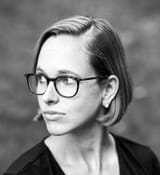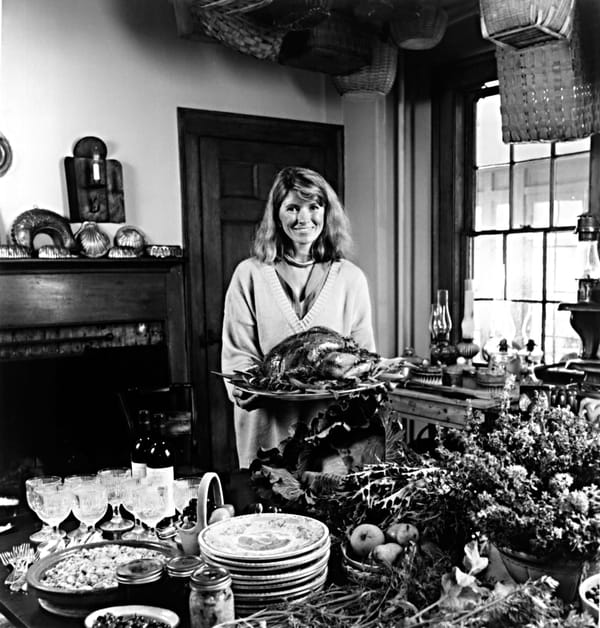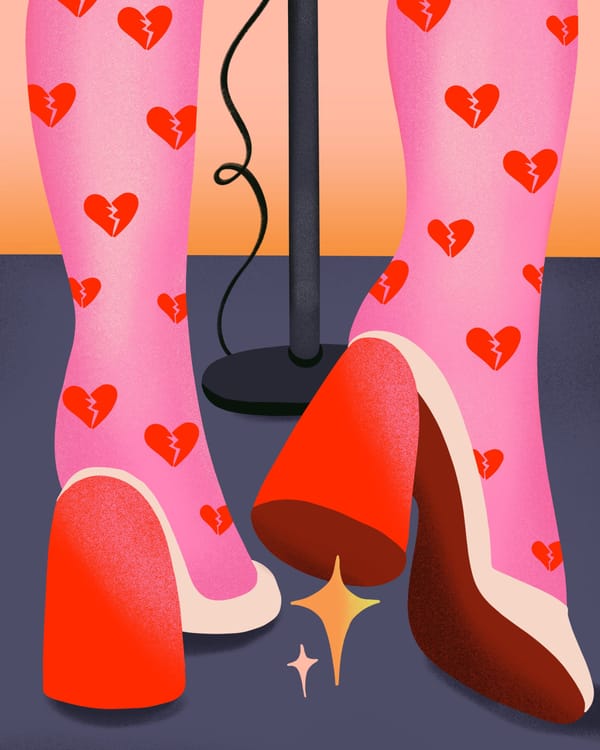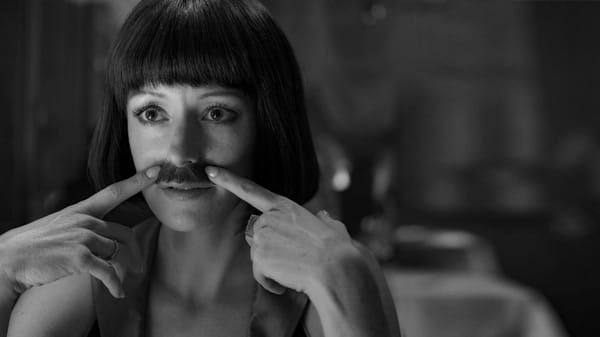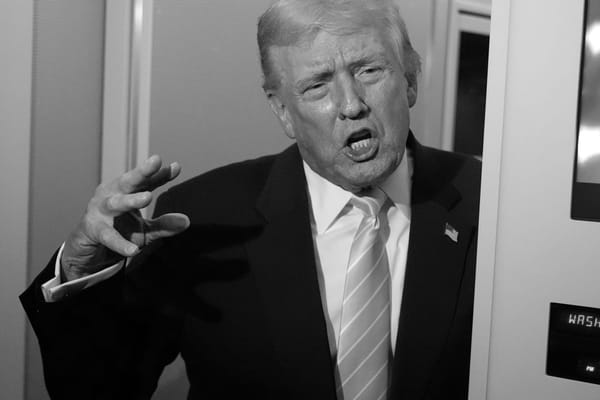Remembering Jane Goodall
The barrier-breaking primatologist, who dedicated her life to conservation and humanitarian projects, died aged 91.
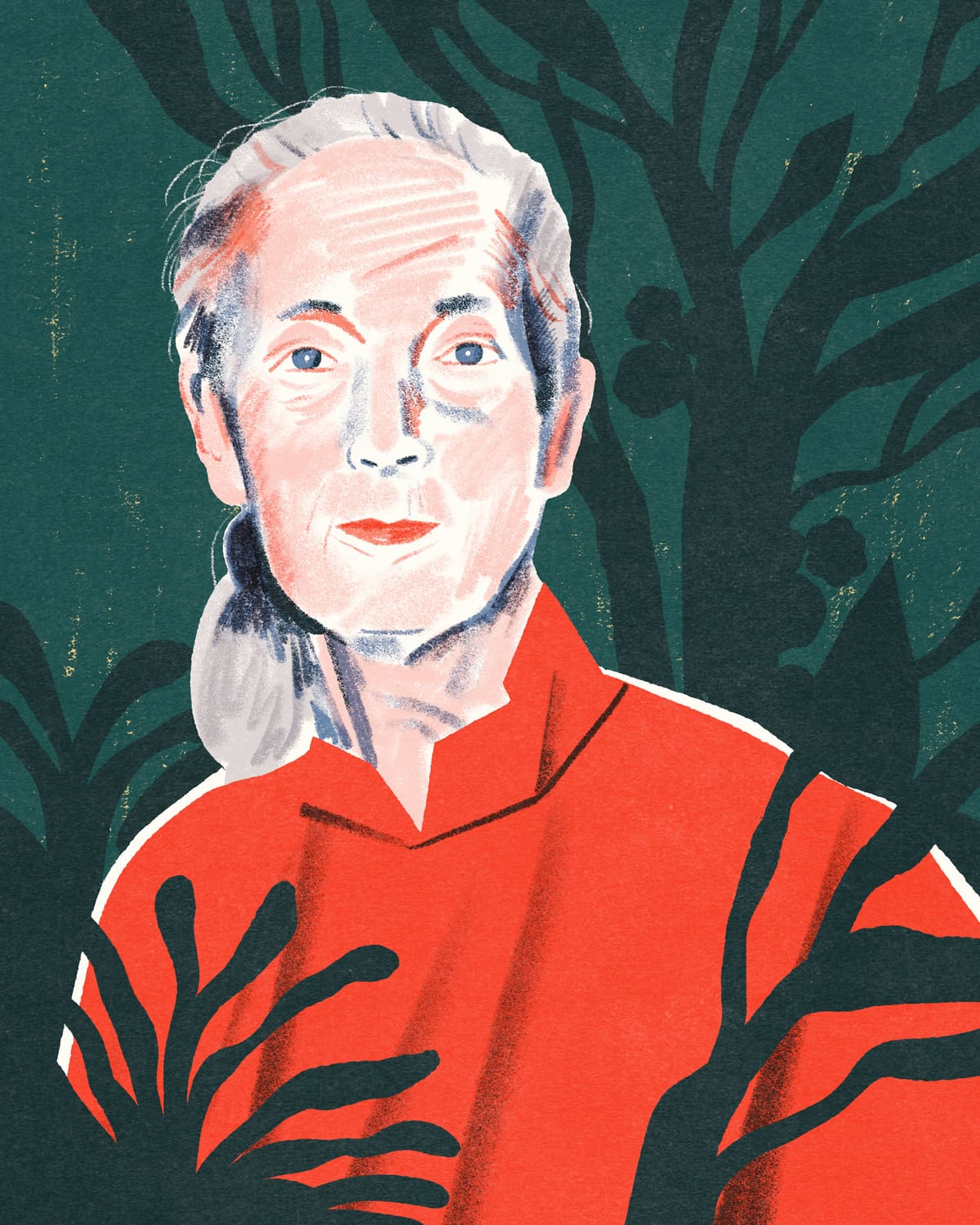
Jane Goodall, a barrier-breaking primatologist who revolutionized our understanding of chimpanzee behavior and dedicated her life to conservation and humanitarian projects over a 65-year career, died on Wednesday. She worked until the end: She was in California on a U.S. speaking tour when she died. She was 91.
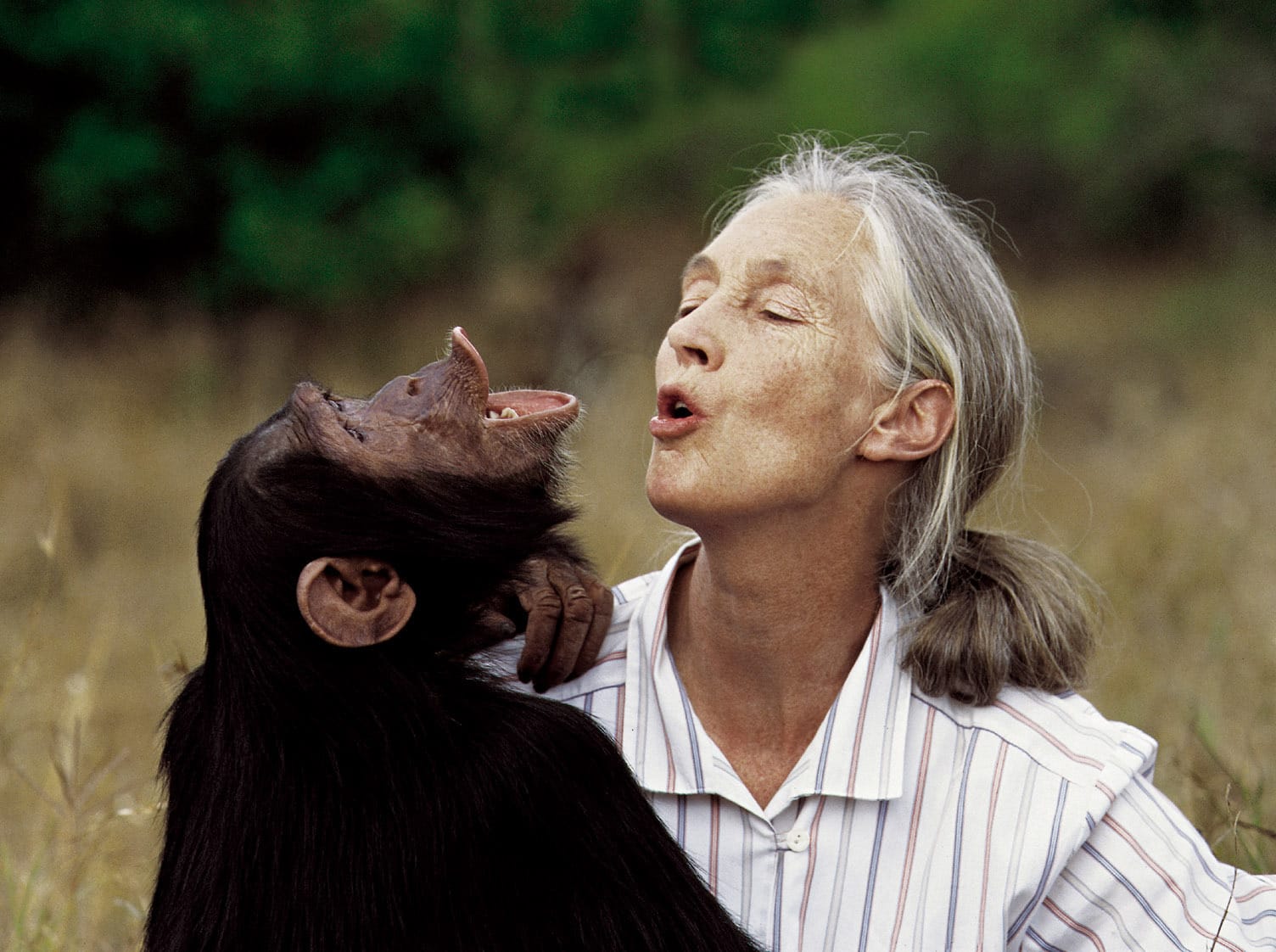
Born in the U.K., Goodall traveled to Africa to study chimpanzees at the age of 26 in 1960. Despite not having a formal university education, she quickly won the respect of her peers in the field—including the notable paleoanthropologist Louis Leakey who had sent her on the mission—and perhaps most importantly, the trust of the primates she studied. She spent months in the field with only the most basic supplies, quietly observing, until finally the chimpanzees felt comfortable with her, too.
In 1961, Goodall was admitted to the University of Cambridge to pursue a doctorate despite not having an undergraduate degree. She was awarded her Ph.D. in 1965.
“Strange as it may sound, some chimpanzees remind me of friends or acquaintances…”
Goodall’s observations of chimpanzees in the wild, living in groups, killing for meat and using basic tools for tasks like digging for termites, culminated in a thrilling 1963 essay by Goodall which ran in National Geographic. The piece, read by millions, brought her fame and made her something of a household name. A film followed not long after.
“I began to learn the basic behavior patterns of the chimpanzees, and after six months I was able to pick out and name some individuals,” she wrote in her essay. “When I saw Mike lazing in the sun, for example, or Count Dracula ambling past, it was like meeting a friend. Strange as it may sound, some chimpanzees remind me of friends or acquaintances…”
Her work hit a nerve and many criticized it, notably her practice of naming the chimpanzees instead of numbering them and documenting their emotions. Goodall didn’t let it sway her.
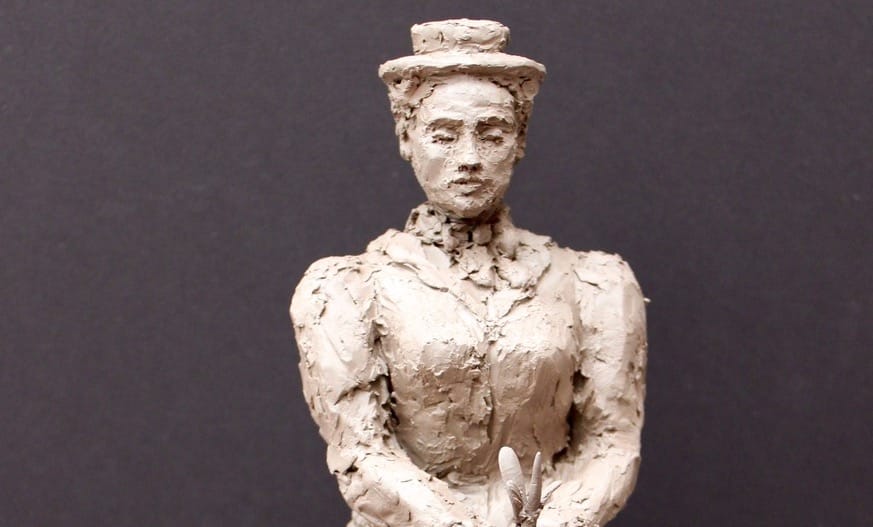
A life of advocacy
Goodall used her platform to educate millions around the world about the environment and the importance of conservation. In 1977, she founded the Jane Goodall Institute—established to support chimpanzee research in Gombe, Tanzania—followed in 1991 by Roots & Shoots—a hands-on environmental program for youth.
“Imagine a billion people all giving a helping hand each day!”
“Apparently, from the time I was about one and a half or two, I used to study insects, anything,” she told the BBC's Terry Wogan on his talk show in 1986. “And this gradually evolved and developed and grew and then I read books like Doctor Dolittle and Tarzan, then it had to be Africa that was my goal.”
Goodall’s impact on women in science was profound: She served as an inspiration to others who would follow her into what was once a male-dominated field. Dian Fossey (who studied gorillas) and Biruté Galdikas (who studied orangutans), were among her colleagues who came to dominate the field of primate research.
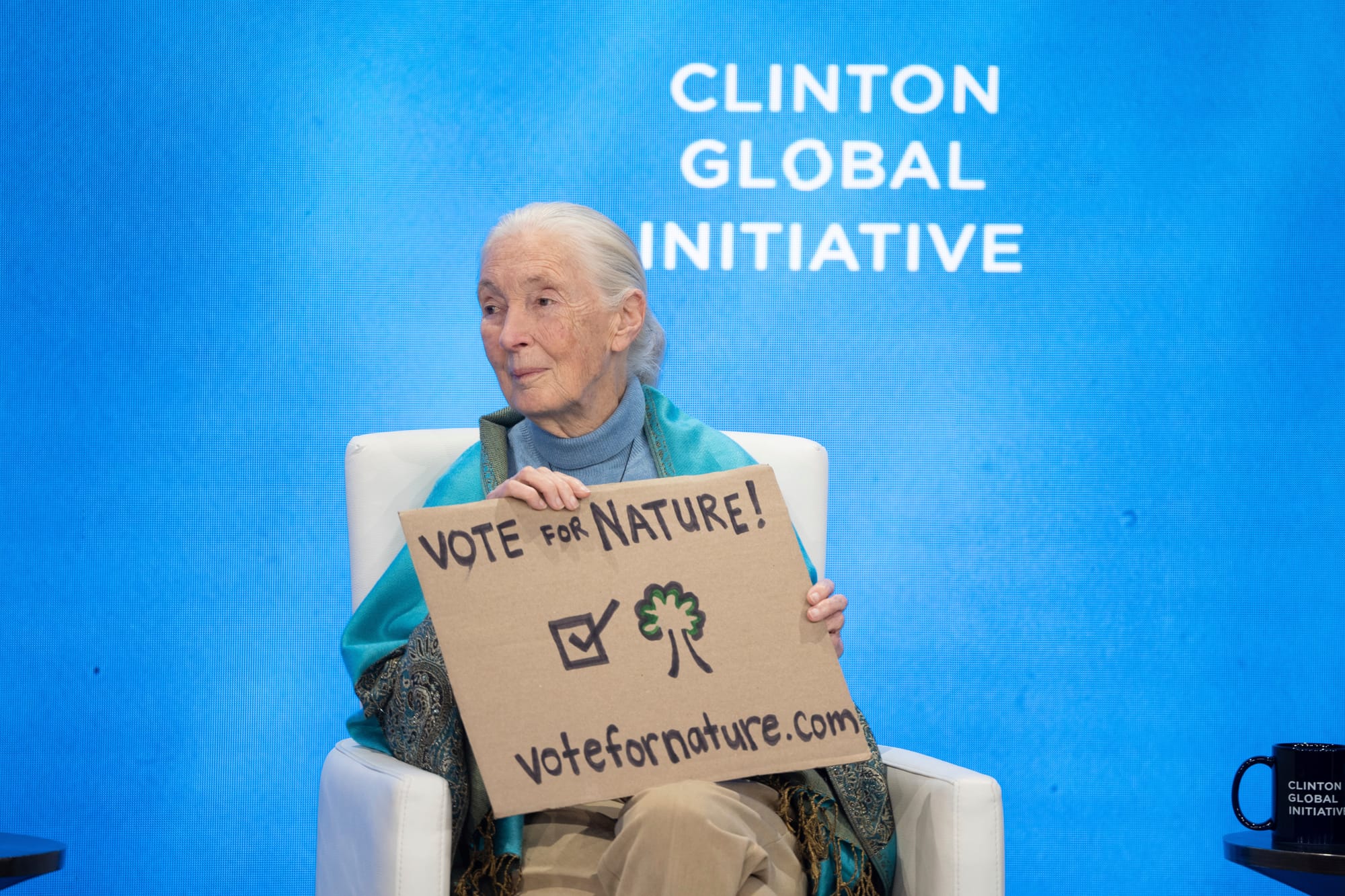
In 2004, Goodall was named a UN Messenger of Peace and she spent her later years traveling widely, arguing that hope—paired with action—could protect forests, wildlife and the climate.
In the end it was the quiet advocacy that made her so powerful. The small actions that, in the aggregate, amounted to something big.
“Each day we have opportunities to help another being or the Earth we all share,” she wrote in 2017. “Sometimes just smiling can be enormously helpful or simply speaking a kind word. Perhaps one might start picking up trash that was left on the street, which might otherwise end up polluting the water harming life in a river or ocean. If we do this day after day, it becomes second nature—eventually perhaps first nature! This makes us feel good—so we want to do more, to feel even better. Imagine a billion people all giving a helping hand each day!”
Goodall is survived by her son, Hugo van Lawick, her sister, Judy, and her three grandchildren.


